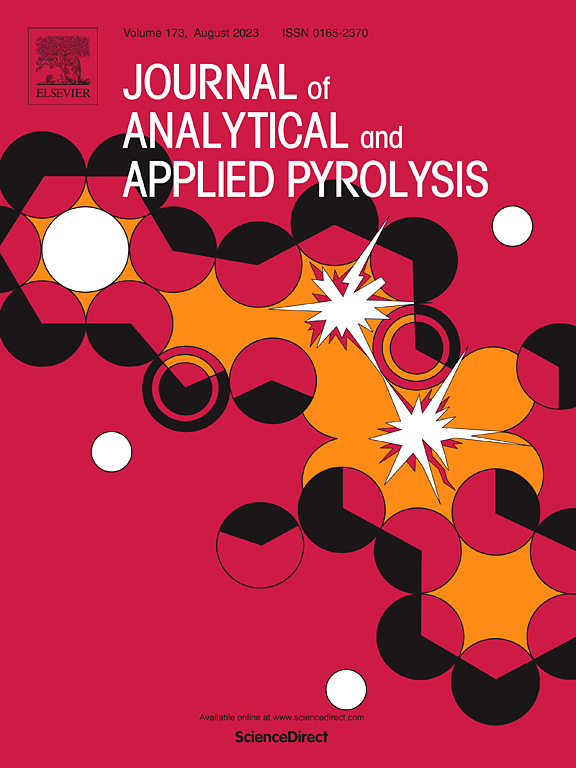评估二氧化碳介导的农业残渣热解的碳负电位
IF 6.2
2区 化学
Q1 CHEMISTRY, ANALYTICAL
引用次数: 0
摘要
麦秸(WS)作为储量最丰富的农业废弃物之一,作为石油衍生碳资源的可再生替代品而备受关注。然而,目前的生物燃料生产面临着实现高效碳利用的挑战。为了解决这个问题,热解提供了一个有前途的平台,能够将WS中的所有碳转化为增值的热原产品,如合成气、生物原油和生物炭。本研究的重点是通过将二氧化碳(CO₂)作为部分氧化剂和碳资源来增强WS热解的负碳潜力。当温度≥ 430˚C时,CO 2与WS热解的挥发物均质相互作用,转化为CO,使热解体系具有负碳特性。为了加速CO₂驱动反应的动力学,通过提供额外的热量和引入镍催化剂,系统地修改了热解装置。此外,还定制了两个工艺参数(反应温度和CO₂浓度)来优化富CO合成气的生产。在最优条件下,对CO 2催化热解的能量需求和净CO 2排放量进行了评价。CO2介导的WS催化热解的碳负电位为1260 mg CO2 / g WS。因此,这一发现为减少与小麦秸秆收获有关的农业部门每年产生的1.35亿吨二氧化碳提供了机会。本文章由计算机程序翻译,如有差异,请以英文原文为准。
Assessing carbon negative potential in CO2-mediated pyrolysis of agricultural residue
Wheat straw (WS), one of the most abundant agricultural residues, has garnered attention as a renewable alternative to petroleum-derived carbon resources. However, current biofuel production faces challenges in realizing efficient carbon use. To address this, pyrolysis offers a promising platform capable of converting all the carbon in WS into value-added pyrogenic products such as syngas, biocrude, and biochar. This study focused on enhancing carbon-negative potential of WS pyrolysis by incorporating carbon dioxide (CO₂) as partial oxidant and carbon resource. At temperatures ≥ 430˚C, CO₂ interacted homogeneously with volatiles pyrolyzed from WS and converted them into carbon monoxide (CO), contributing to carbon-negative character to the pyrolysis system. To accelerate the kinetics of CO₂-driven reactions, the pyrolysis setup was systematically modified by delivering an additional heat and introducing a nickel catalyst. Additionally, two process parameters (reaction temperature and CO₂ concentration) were tailored to optimize CO-rich syngas production. The energy requirements and net CO₂ emissions of CO₂-mediated catalytic pyrolysis were evaluated under optimal conditions. CO₂-mediated catalytic pyrolysis of WS demonstrated a carbon-negative potential of 1260 mg CO2 per gram of WS. Therefore, this finding offers opportunities to suppress 1235 million tons of CO₂ annually across the agricultural sector linked to wheat straw harvest.
求助全文
通过发布文献求助,成功后即可免费获取论文全文。
去求助
来源期刊
CiteScore
9.10
自引率
11.70%
发文量
340
审稿时长
44 days
期刊介绍:
The Journal of Analytical and Applied Pyrolysis (JAAP) is devoted to the publication of papers dealing with innovative applications of pyrolysis processes, the characterization of products related to pyrolysis reactions, and investigations of reaction mechanism. To be considered by JAAP, a manuscript should present significant progress in these topics. The novelty must be satisfactorily argued in the cover letter. A manuscript with a cover letter to the editor not addressing the novelty is likely to be rejected without review.

 求助内容:
求助内容: 应助结果提醒方式:
应助结果提醒方式:


